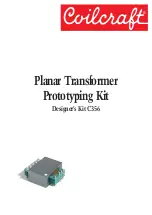
Document 2.4.126, Revision 4
October 2017
13
Three-Phase Padmounted Distribution Transformers
4.
Series/Multiple or Delta/Wye Switch
Settings
—Check series/multiple and delta/
wye switch settings to make sure they are
set to the correct position. If delta/wye
or series/multiple connections are made
using an internal terminal board instead
of a switch, check to ensure that these
connections are made properly according
to the chart on the transformer nameplate.
Refer to “Opening the Transformer Tank” for
instructions.
5.
Grounding
—Check to ensure that the
transformer tank is permanently and
effectively grounded. The transformer tank
ground pad is located inside the terminal
compartment near the bottom of the tank.
6.
Bolted Connections
—Check all bolted
connections for tightness, referring to
nominal torque guidelines contained in
Tables 1 through 4.
7.
Fluid Level
—Check to make sure the fluid
level is correct as indicated by the fluid level
gauge or sight plug. If the transformer does
not have a fluid level gauge or sight plug,
the fluid level can be checked by temporarily
removing the liquid-level plug located at the
25° C mark.
8.
Fluid Temperature
—Observe the fluid
temperature gauge and make sure the
temperature is no lower than indicated
below before the unit is energized.
-20°C (-4°F) for conventional
transformer oil
-0°C (32°F) for R-Temp fluid
-10°C (14°F) for FR3 fluid
9.
Internal Fault Detector
—If the transformer
is supplied with an Internal Fault Detector
(IFD), remove the red shipping lock
after installation and before placing the
transformer into service.
10.
Current Transformers
—If current
transformers (CTs) are present, connect CT
leads to the metering load. If CT leads are
not connected to a metering load, they must
be shorted together and grounded before
the transformer is energized.
11.
Accessory Wiring
—Check wiring of control
and alarm circuits (if supplied) to make
sure there are no loose connections and no
damage to wire insulation.
12.
Tank Finish
—Check all painted surfaces
to make sure that there is no damage or
corrosion.
13.
Tools
—Check to make sure that all tools and
equipment are accounted for.
14.
Internal Inspection
—The transformer tank
is sealed and should not be opened unless
necessary. If the transformer tank must be
opened, refer to “
Opening the Transformer
Tank
” for instructions.














































